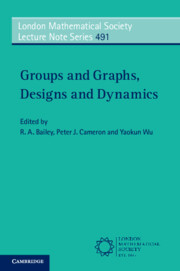4 - Symbolic dynamics and the stable algebra of matrices
Published online by Cambridge University Press: 11 May 2024
Summary
We give an introduction to a topic in the “stable algebra of matrices,” as related to certain problems in symbolic dynamics. We introduce enough symbolic dynamics to explain these connections, but the algebra is of independent interest and can be followed with little attention to the symbolic dynamics. This “stable algebra of matrices” involves the study of properties and relations of square matrices over a semiring S, which are invariant under two fundamental equivalence relations: shift equivalence and strong shift equivalence. When S is a field, these relations are the same, and matrices over S are shift equivalent if and only if the nonnilpotent parts of their canonical forms are similar. We give a detailed account of these relations over other rings and semirings. When S is a ring, this involves module theory and algebraic K theory. We discuss in detail and contrast the problems of characterizing the possible spectra, and the possible nonzero spectra, of nonnegative real matrices.We also review key features of the automorphism group of a shift of finite type; the recently introduced stabilized automorphism group; and the work of Kim, Roush and Wagoner giving counterexamples to Williams’ shift equivalence conjecture.
Keywords
- Type
- Chapter
- Information
- Groups and Graphs, Designs and Dynamics , pp. 266 - 422Publisher: Cambridge University PressPrint publication year: 2024



